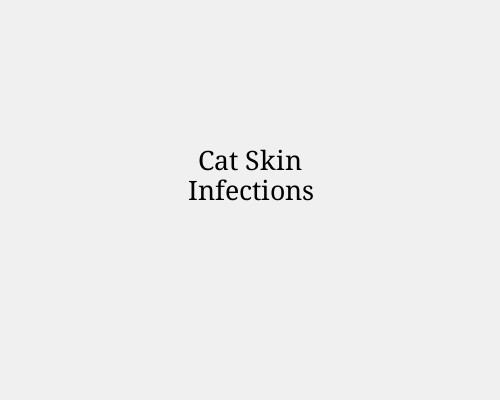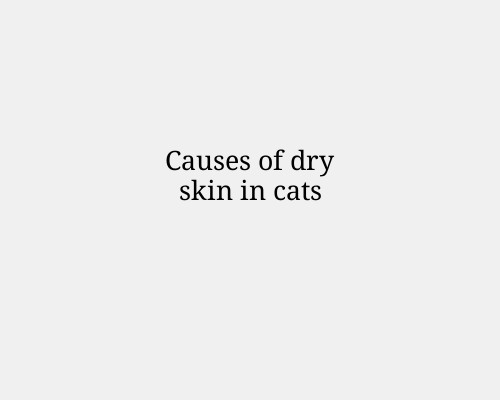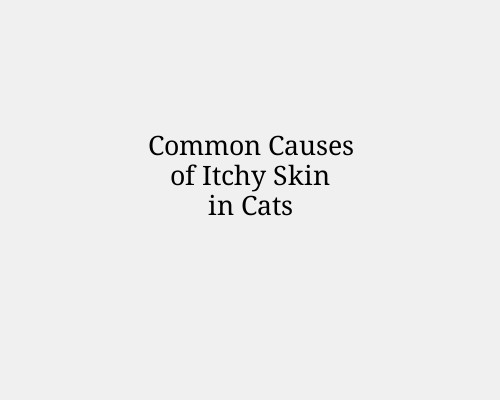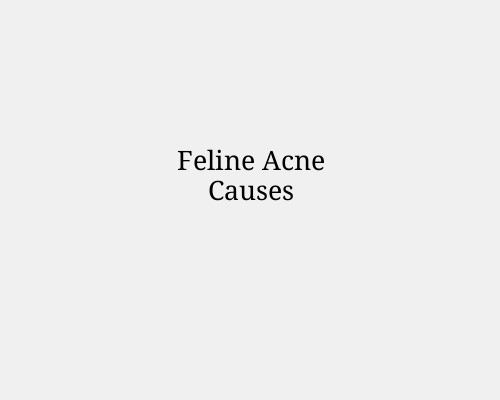Cat Skin Infections
Cat Skin Infections: How to Spot and Treat Them
Cats are known for their meticulous grooming habits, but even the most fastidious feline can develop skin infections. These infections can be caused by bacteria, fungi, parasites, or allergies, leading to discomfort and potential health complications. Understanding the signs of skin infections in cats and knowing how to treat them effectively can help keep your pet healthy and comfortable.
Common Causes of Cat Skin Infections
Bacterial Infections – Often resulting from wounds, scratches, or excessive grooming, bacterial infections can cause swelling, redness, and discharge.
Fungal Infections – Ringworm is a common fungal infection in cats that appears as circular patches of hair loss and scaly skin.
Parasitic Infestations – Fleas, mites, and ticks can lead to severe skin irritation and infections due to excessive scratching.
Allergic Reactions – Allergies to food, pollen, or household products can trigger skin infections.
Yeast Infections – Overgrowth of yeast, especially in moist areas like the ears or skin folds, can lead to irritation and odor.
Autoimmune Disorders – Some conditions can cause skin lesions that become infected due to a weakened immune system.
Signs and Symptoms of Skin Infections in Cats
Redness and swelling of the skin
Hair loss or bald patches
Scabs, sores, or pustules
Itching, excessive licking, or grooming
Unpleasant odor from the skin
Crusty or flaky patches
Presence of discharge or pus
Sensitivity or pain when touched
How to Diagnose a Skin Infection in Cats
If you suspect your cat has a skin infection, a veterinarian should assess the condition. Diagnosis may include:
Physical Examination – The vet will inspect the affected area for signs of infection.
Skin Scraping or Swabs – Samples may be taken to identify bacteria, fungi, or parasites.
Allergy Testing – If allergies are suspected, testing can help pinpoint the trigger.
Biopsy or Culture – In severe cases, a biopsy or culture may be needed to determine the exact cause.
Treatment Options for Cat Skin Infections
Medications
Antibiotics – Prescribed for bacterial infections.
Antifungal Treatments – Used for fungal infections like ringworm.
Antiparasitic Medications – Effective for flea, mite, and tick infestations.
Steroids or Antihistamines – Helps reduce inflammation and itching in allergic reactions.
Topical Treatments
Medicated Shampoos – Can soothe and cleanse infected skin.
Antiseptic Creams and Sprays – Help prevent further infection and promote healing.
Flea and Tick Preventatives – Essential for avoiding parasite-related infections.
Home Care and Prevention
Keep Wounds Clean – Regularly clean and disinfect any cuts or scratches.
Maintain Good Hygiene – Regular grooming helps prevent skin issues.
Use Hypoallergenic Products – Avoid harsh chemicals that may irritate the skin.
Provide a Nutritious Diet – A balanced diet boosts immune health and skin condition.
Control Parasites – Regular flea and tick prevention is crucial.
When to See a Veterinarian
If your cat's skin infection worsens, spreads, or does not improve with basic care, consult a vet immediately. Severe infections can lead to pain, secondary health issues, and even systemic infections.
By recognizing the signs of skin infections early and seeking appropriate treatment, you can ensure your cat stays happy and healthy. Regular check-ups and good hygiene practices go a long way in preventing future infections.







